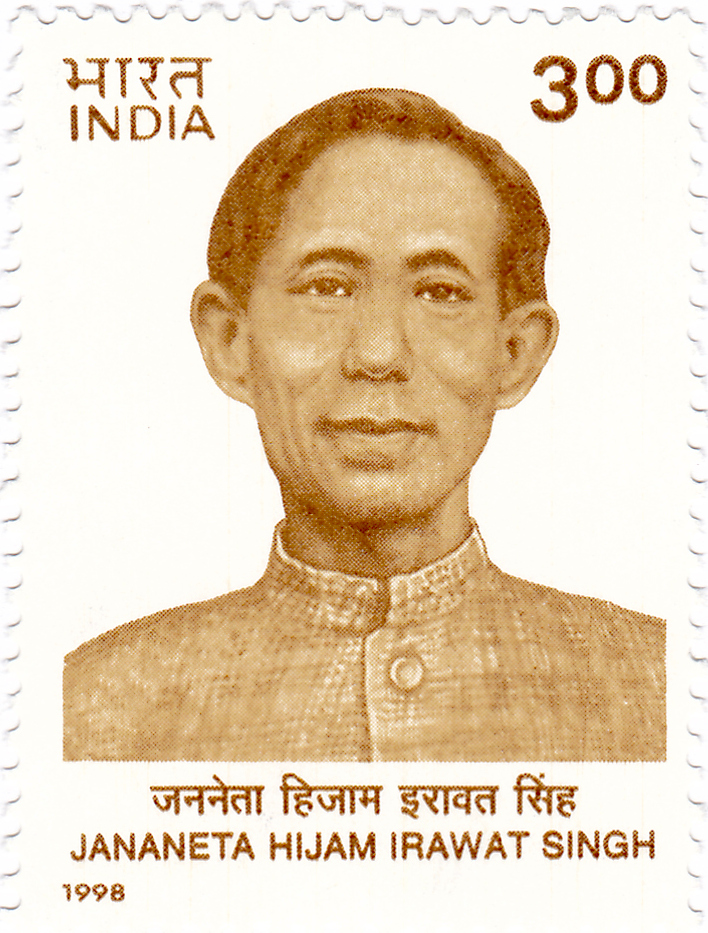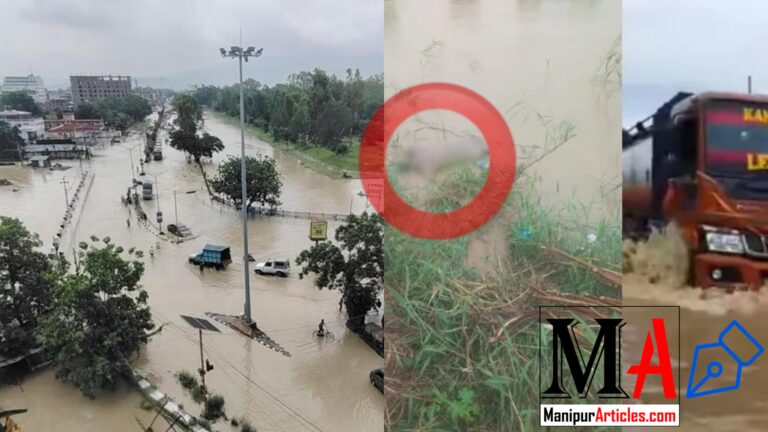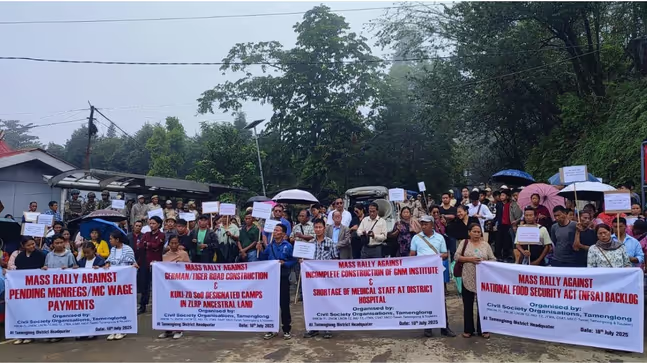Manipur’s Ongoing Struggle Against Insurgency: A Deep Dive into Recent Arms Recoveries
Summary of Recent Events in Manipur
In the past 48 hours, Manipur’s security forces have intensified operations in the Kangpokpi district, leading to significant arms recoveries. Operations in villages such as N Boljang, K Geljang, and K Patbung resulted in the seizure of weapons including 7.62 mm SLRs, .22 mm pistols, improvised mortars, and various ammunition. These actions underscore the persistent efforts to curb insurgent activities in the region.
Understanding Manipur’s Insurgency: A Comprehensive Analysis
Manipur, often dubbed the “Jewel of India,” is a state rich in culture and history. Yet, beneath its scenic beauty lies a complex web of insurgency and security challenges that have persisted for decades. Let’s delve into the intricacies of Manipur’s insurgency, recent developments, and the broader implications for the region.
Historical Context of Insurgency in Manipur
To grasp the current situation, it’s essential to understand the roots of insurgency in Manipur. Post-independence, several ethnic groups felt marginalized, leading to demands for autonomy and, in some cases, outright independence. This discontent sowed the seeds for various insurgent movements, each with its own agenda and vision for Manipur’s future.
Major Insurgent Groups Operating in Manipur
Over the years, multiple insurgent groups have emerged, each representing different ethnic communities and political aspirations. Some of the prominent ones include:
- People’s Liberation Army (PLA): Established in 1978, the PLA seeks an independent socialist state of Manipur.
- United National Liberation Front (UNLF): Formed in 1964, UNLF aims to achieve independence and self-determination for the people of Manipur.
- Kuki National Organization (KNO): Representing the Kuki community, KNO advocates for a separate Kuki state within India.
- National Socialist Council of Nagaland-Isak-Muivah (NSCN-IM): While primarily a Naga insurgent group, NSCN-IM’s activities extend into Manipur, especially in Naga-dominated areas.
Recent Security Operations and Arms Recoveries
In recent months, security forces have intensified their operations to dismantle insurgent networks and recover illegal arms. Notable operations include:
- Kangpokpi District Operations: In the past 48 hours, joint teams of central forces and Manipur police conducted searches in N Boljang, K Geljang, and K Patbung villages. The operations led to the recovery of:
- Two 7.62 mm Self-Loading Rifles (SLRs) with magazines.Nenow Demo+9Northeast Now+9Nenow Demo+9
- One .22 mm country-made pistol with magazine.
- One improvised mortar (Pompi).NorthEast Now+8Nenow Demo+8NorthEast Now+8
- Two country-made pull mechanism rifles.
- Six mortar bombs.
- Eight 7.62 mm rounds.
- One Motorola handset (Baofeng).
- Additional recoveries from K Geljang and K Patbung included rifles, pistols, live rounds, radio sets, and chargers.
- Churachandpur District Operations: A joint team from the Assam Rifles and Manipur Police raided a village along the Manipur-Myanmar border, uncovering a cache of weapons and ammunition. Nenow Demo+3Northeast Now+3Nenow Demo+3
- Thoubal and Kakching Districts: Security forces unearthed two insurgent hideouts, seizing a large cache of arms and ammunition. Northeast Now+2Nenow Demo+2Nenow Demo+2
Impact on Civilians and Daily Life
The prolonged insurgency has profoundly affected the daily lives of Manipur’s residents:
- Economic Disruptions: Frequent bandhs (strikes) and blockades have hampered trade and commerce, leading to economic instability.
- Psychological Trauma: Continuous exposure to violence has resulted in widespread psychological issues among civilians, including anxiety and depression.
- Migration: Many have migrated to other states in search of safety and better opportunities, leading to a brain drain.
Government Initiatives and Peace Efforts
Recognizing the need for peace, both state and central governments have undertaken various initiatives:
- Peace Talks: Engagements with insurgent groups to bring them to the negotiation table.
- Development Projects: Initiatives aimed at improving infrastructure, education, and healthcare to address root causes of insurgency.
- Rehabilitation Programs: Schemes to rehabilitate surrendered militants and integrate them into mainstream society.
The Human Element in Security Operations
Beyond the strategies, technology, and politics, let’s not forget the human element. The brave men and women who risk their lives to secure Manipur deserve our utmost respect. Their dedication, resilience, and courage are the backbone of every successful operation. Each recovered weapon represents not just a victory over crime, but also the safeguarding of countless innocent lives.
Imagine a guardian who stands watch day and night, ensuring that you can sleep peacefully knowing that someone is there to protect you. That’s what these security forces represent to the people of Manipur. Their commitment to duty, often under challenging circumstances, serves as a powerful reminder of the sacrifices made for the greater good.
Future Strategies and Policy Implications
Looking forward, the success of the Kangpokpi operation will undoubtedly influence future policy decisions and operational strategies in Manipur. Law enforcement agencies are likely to further refine their tactics, integrate more advanced technologies, and expand their intelligence networks. Policy makers, on the other hand, may consider new legislative measures to tighten controls on arms trafficking and provide better support for counter-insurgency efforts.
This dynamic interplay between field operations and policy development is key to ensuring that the hard-won gains in security are not lost over time. It’s like nurturing a garden—regular care and attention ensure that the blossoms of peace and stability continue to flourish.
Conclusion
To sum it all up, the recovery of a cache of arms in Kangpokpi by Manipur security forces is a landmark achievement in the ongoing struggle against illegal arms and insurgency. This operation, steeped in careful planning, robust intelligence, and inter-agency cooperation, represents a significant step towards a safer, more secure Manipur. It sends a clear message: those who seek to destabilize the region will face determined and capable resistance.
As we look to the future, it is crucial that the lessons learned from this operation inform broader security strategies. From leveraging technology to enhancing community engagement and addressing root causes, every element plays a part in building lasting peace. For the residents of Manipur, this recovery is not just about seizing weapons—it’s about reclaiming their right to live in a safe and stable environment.
The road ahead may be challenging, but with continued dedication, innovation, and unity, there is every reason to believe that Manipur can overcome its security challenges and blossom into a beacon of hope and progress in Northeast India.
FAQs
- What was the significance of the arms recovery operation in Kangpokpi?
- The operation was a major success in the fight against illegal arms trafficking and insurgency, demonstrating the effectiveness of coordinated efforts by Manipur security forces and bolstering public confidence in regional security measures.
- How did intelligence play a role in the Kangpokpi operation?
- Robust intelligence gathering, involving local informants, surveillance technology, and inter-agency collaboration, enabled precise planning and execution of the raid, ensuring maximum success with minimal risks.
- What types of weapons were reportedly recovered during the operation?
- The cache included modern rifles, handguns, and various types of ammunition, which are commonly used by insurgent groups and pose a significant threat if left unchecked.
- How does this operation impact local communities in Manipur?
- By removing dangerous weapons from the streets, the operation enhances public safety and instills a renewed sense of security among residents, paving the way for economic and social development in the region.
- What future measures are expected to be implemented following this operation?
- Authorities are likely to enhance intelligence networks, integrate advanced technologies into security operations, and refine counter-insurgency strategies, while also addressing socio-economic factors that contribute to illegal arms trafficking.





